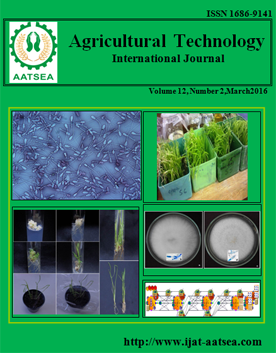Characteristics of epididymal sperm recovered from slaughterhouse derived testes of nondescript/native goats in the Philippines
Main Article Content
Abstract
Article Details

This work is licensed under a Creative Commons Attribution-NonCommercial-NoDerivatives 4.0 International License.
References
Bondoc, O. L. (2005). The Philippine goat registry in relation to genetic improvement and conservation. The Philippine Agricultural Scientist 88:179-191.
Barati, F., Mahabady, K. and Mohammadi, G. (2009). Cryopreservation of in situ cool stored buffalo (Bubalus bubalus) epididymal sperm. Iranian Journal of Veterinary Research 10:339-345.
Beltran, M. A. G., Eufrocina, P. A., Edwin, C. A., Cruz, E. M., Aquino, F. P. and Cruz, L. C. (2013). Optimized extenders for cryopreservation of buck semen for artificial insemination. Philippine Journal of Veterinary and Animal Science 39:1-10.
Cooper, T. G. (2005). Cytoplasmic droplets: The good, the bad or just confusing. Human Reproduction 20:9-11.
Ehling, C., Rath D., Struckmann, C., Frenzel, A., Schindler, L. and Niemann, H. (2006). Utilization of frozen-thawed epididymal ram semen to preserve genetic diversity in Scrapie susceptible sheep breeds. Theriogenology 66:2160-2164.
Foote, R. H. (2000). Fertilizing ability of epididymal sperm from dead animals. Journal of Andrology 21:355.
Guimaraes, T., Lopes, G., Ferreira, P., Leal, I. and Rocha, A. (2012). Characteristics of stallion epdididymal spermatozoa at collection and effect of two refrigeration protocols on th quality of frozen/thawed sperm cells. Animal Reproduction Science 136:85-89.
Harayama, H., Shibukawa, T., Miyake, M., Kannan, Y. and Kato, S. (1996). Fructose stimulates shedding of cytoplasmic droplets from epididymal boar spermatozoa. Reproduction Fertilizer Development 8:1039-1043.
Kaabi, M., Paz, P., Alvarez, M., Anel, A., Boixo, J. C., Rouissi, H. and Anel, L. (2003). Effect of epididymis handling conditions on the quality of ram spermatozoa recovered post mortem. Theriogenology 60:1249-1259.
Karja, N. W. K., Respaty, E. M. A., Nuraini, I., Prihatno, S. A. and Gustari, S. (2010). Characteristic of frozen-thawed epididymal spermatozoa and refrigerated storage of ram spermatozoa. Journal of Indonesian Tropical Animal and Agriculture 35:63-67.
Kozdrowski, R., Nizanski, W., Dubiel, A. and Olech, W. (2011). Possibilities of using European bison (Bison bonasus) epididymal spermatozoa collected post-mortem for cryopreservation and artificial insemination: a pilot study Reproductive Biology and Endocrinology 9:1-6.
Lima, I. C. S., Andrade, I. R. A., Aguiar, G. V., Silva, M. M., Catunda, A. G. V., Martins, G. A., Gadelha, C. R. F. and Campos, A. C. N. (2013). In vitro evaluaton of goat cauda epidiumal sperm, cooled in different extenders at 4 °C. Archtecture and Zootechnology 62:429-437.
Mamuad, F. V., Venturina, E. V. and Saito, H. (2004). Collection, processing and handling of buffalo semen Philippine carabao center at CLSU. Water Buffaloes and Beef Cattle Improvement Project, Japan International Cooperation Agency.
Ocampo, L.C., Aquino, F. P., GAutane, J. J., Maylem, E. S., Ocampo, M. B. and Atabay, E. P. (2015). Goat epididymal sperm from post mortem tetes remain alive in refrigerated semen extender for 72 hours. Proceedings in the 2015 International Conference in Nature Studies and Innovations for the Environment of the Philippine Society for the Study of Nature on Hotel Stotsenberg, Clark, Pampanga, Philippines.
Pukazhenti, B., Comizzoli, P., Travis, A. J. and Wildt, D. E. (2006). Applications of emerging technologies to the study and conservation of threatened and endangered species. Reproduction, Fertility and Development 18:77-90.
Philippine Statistics Authority (2014). Goat Industry Performance Report. January to December 2014 .
Saenz, J. R. (2007). Cryopreservation of white tailed deer epididymal sperm cell for artificial insemination. Master of Science Thesis, Louisiana State University, pp.10-15.
Varisli, O., Cevdet, U., Cancu, A. and Yuksel, A. (2009). Motility and acrosomal integriy comparisons between electro ejaculated and epididymal ram sperm after exposure to a range of anisosmoic solutions, cryoprotective agents and low temperatures. Animal Reproductionh Science 110:256-268.


